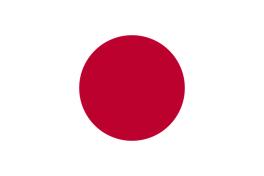Donate to Support Supercluster
Your support makes the Astronaut Database and Launch Tracker possible, and keeps all Supercluster content free.
SUPPORTSupercluster on Patreon
Your support makes the Astronaut Database and Launch Tracker possible, and keeps all Supercluster content free.
SUPPORTThis goes
to space
Kirameki-3
Kirameki-3 is a geostationary communications satellite operated by DSN Corporation, a subsidiary of SKY Perfect JSAT Group. Its payload is pure X-band and will be used for military communications by the Japanese military. It is Japan's first dedicated military communications satellite and is designed to serve for at least fifteen years.
Courtesy of Wikipedia.
On this
rocket
H3-22
The H3 Launch Vehicle is an expendable launch system with two stages. It is a liquid-propellant rocket with strap-on solid rocket boosters and will be launched from Tanegashima Space Center in Japan.
Stats
Height: 63 m (207 ft).
Diameter: 5.27 m (17.3 ft).
Stages: 2
Boosters: 0, 2 or 4
Payload to sun-synchronous orbit (SSO): 4,000 kg (8,800 lb).
Payload to geostationary transfer orbit (GTO): 4,000–7,900 kg (8,800–17,400 lb).
The first stage uses liquid oxygen and liquid hydrogen as propellants and carries zero, two or four strap-on solid rocket boosters (SRBs) using polybutadiene fuel. The first stage is powered by two or three LE-9 engines which uses an expander bleed cycle design. The fuel and oxidizer mass of the first stage is 225 metric tons. The second stage is powered by a single engine which is an improved LE-5B. The propellant mass of the second stage is 23 metric tons.
Mitsubishi Heavy Industries (MHI) and JAXA are responsible for the design, manufacture, and operation of the H3. It is the world's first rocket to use an expander bleed cycle for the first stage engine.
The minimum configuration is to carry a payload of up to 4,000 kg (8,800 lb) into Sun-synchronous orbit (SSO) for about 5 billion yen (38.1 million USD), and the maximum configuration is to carry more than 6,500 kg (14,300 lb) into geostationary transfer orbit (GTO).
Credit: Wikipedia
From this
launch site
LA-Y2 - Tanegashima Space Center - Japan
LA-Y2
Launch Area - Yoshinobu Launch Complex 2 (LA-Y2 for short) is part of a two-launch-pad area of the Tanegashima Space Center used for the H-II family of rockets.
The pad is located just 190 meters (624 ft) from neighboring pad LA-Y1 and has been used -- to date -- exclusively for the H-IIB rocket for automated HTV resupply missions to the International Space Station.
The overall two-pad Yoshinobu Launch Complex is the northernmost launch site of the Tanegashima Space Center.
Rockets are assembled and processed vertically in the vehicle assembly building before technicians roll them out to the launch pad, a 30-minute journey of 365 meters.
LA-Y2 hosted its first launch in September 2009 and has been active ever since.
Tanegashima Space Center
The Tanegashima Space Center is Japan's largest launch center and gets its name from the island "Tanegashima" it is located on.
Located in southern Japan, it is part of the overall Range, which handles Japan’s orbital launches.
The center opened for operations in October 1969 as part of the National Space Development Agency of Japan (NASDA). It is now owned by JAXA.
Tanegashima includes the Yoshinobu Launch Complex for the H-IIA and H-IIB rockets, a Vehicle Assembly Building, a Spacecraft Test and Assembly Building, and the Takesaki Range Control Center.
Image: Wikipedia
Here's where to view Kirameki-3
Viewing Sites
- Tanegashima Space Center Observation Deck
GET THE SUPERCLUSTER APP
THE SUPERCLUSTER PODCAST
A podcast exploring the amazing milestones that changed space history, the wildest ideas that drive our future, and every development in this new Golden Age of Space.
Donate to support
Your support makes the Astronaut Database and Launch Tracker possible, and keeps all Supercluster content free.
SupportCOPYRIGHT 2021 SUPERCLUSTER LLC


